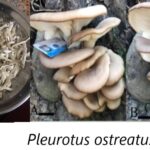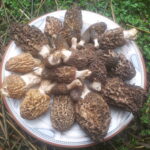Mushrooms, with their diverse shapes and colors, contribute to the allure of nature but can also pose serious health risks if not approached with caution. While many mushrooms are delicious and safe to consume, some species contain toxins that can cause severe illness or even be fatal. It is imperative to exercise extreme caution when foraging for mushrooms, especially if you intend to consume them.
Here are key points to consider regarding poisonous mushrooms:
Accurate identification is the cornerstone of safe mushroom foraging. Know the distinguishing features of edible mushrooms and be able to differentiate them from toxic varieties. Pay close attention to characteristics such as cap color, shape, gills, spore print, and the presence of a ring or veil.
Common Poisonous Varieties: Some notorious poisonous mushrooms include the Death Cap (Amanita phalloides), Fly Agaric (Amanita muscaria), Deadly Galerina (Galerina marginata), and others. Familiarize yourself with the toxic species prevalent in your region.
Toxic Compounds: Poisonous mushrooms can contain various toxic compounds, including amatoxins, hydrazine toxins, and others. These substances can lead to severe gastrointestinal distress, liver and kidney failure, neurological symptoms, or even death.
Mycophagy Risks: Eating wild mushrooms, even when confident in their identification, carries inherent risks. Individuals react differently to toxins, and allergic reactions can occur. Certain toxins may not produce immediate symptoms, making it essential to be vigilant about long-term effects.
Expert Consultation: If uncertain about a mushroom’s edibility, seek guidance from experienced foragers, mycologists, or local mycological clubs. These experts can provide valuable insights and enhance your ability to make informed decisions.
Avoid Folklore Myths: Disregard folk remedies or methods for distinguishing edible from poisonous mushrooms that lack scientific basis. Rely on accurate identification techniques and reputable sources for information.
Immediate Medical Attention: If mushroom poisoning is suspected, seek medical attention promptly. Early intervention is crucial in mitigating the effects of toxins. Bring a sample or photograph of the mushroom for proper identification, if possible.
Educate and Exercise Caution: Continuously educate yourself about local mushroom species and stay updated on any emerging knowledge. Exercise caution, particularly if you are new to mushroom foraging, and consider going out with an experienced guide until you are confident in your identification skills.
Remember that the world of mushrooms is fascinating but can be treacherous. Approach foraging with respect, responsibility, and a commitment to safety. When in doubt, it is always better to err on the side of caution and refrain from consuming mushrooms unless their edibility is unquestionable.






